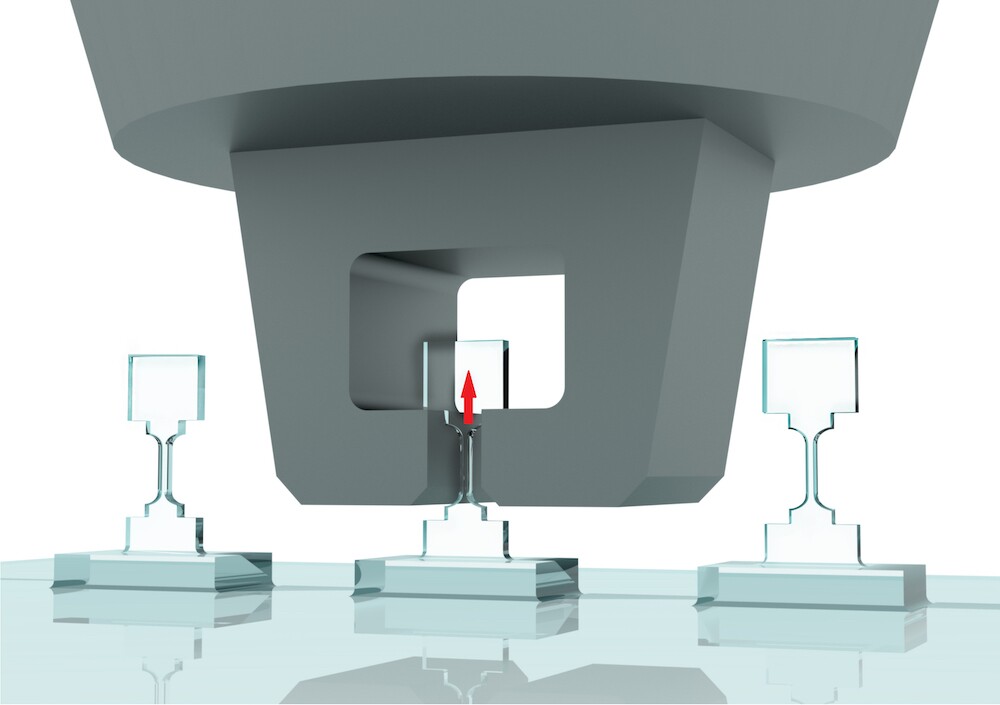Diamond is a famously hard material, but now scientists at City University of Hong Kong have managed to stretch it further than ever before. Why? Stretching nanoscale samples changes their electronic and optical properties, which could open up a new world of diamond devices.
To say that diamond isn’t very elastic is an understatement – while the stretchiest materials can reach tensile elastic strains of a few hundred percent, bulk diamond tops out at less than 0.4 percent.
On the nanoscale however, diamond theoretically should be capable of much higher elasticity. A few years ago, the City University team bent nanoscale needles of diamond to tensile elastic strains of about 9 percent.
In the new study, the team took things a step further. They made bridge-shaped samples of diamond about 1,000 nanometers long and 300 nm wide, and stretched them lengthways. Over a series of cycles, the diamond showed an elastic deformation of around 7.5 percent across the whole piece, before returning to its original shape once the pressure was off.
In follow-up tests, the researchers optimized the shape of the samples, and then managed to stretch the diamond even further – up to 9.7 percent. That, they say, is close to the theoretical elastic limit of diamond.

But the experiment wasn’t just about stretching diamond for the sake of it – it could pave the way for new electronic components made of diamond. Applying that kind of strain can actually change some of the electronic and photonic properties of a material.
To find out how much by, the team simulated diamond’s electronic properties under different levels of strain, between zero and 12 percent. They found that as the tensile strain increased, the diamond’s bandgap decreased, essentially meaning it became more electrically conductive. It peaked at a 2 electronVolt drop when under about 9 percent strain. Using spectroscopy, the scientists verified this bandgap-decreasing trend in the diamond samples.
The team says that straining diamond could make it more useful for a range of different electronic applications. Interestingly, the simulations also suggested that stretching diamond beyond 9 percent in a different crystalline orientation would change its bandgap from indirect to direct. That means that an electron traveling through it could directly emit a photon, potentially making optoelectronic devices more efficient.
The research was published in the journal Science.
Source: City University of Hong Kong





